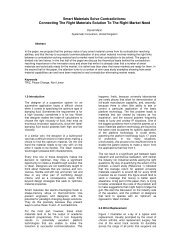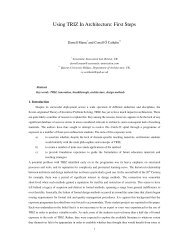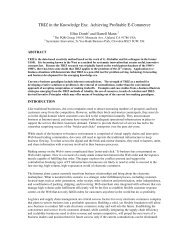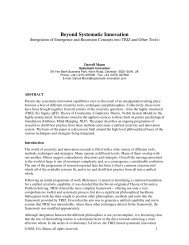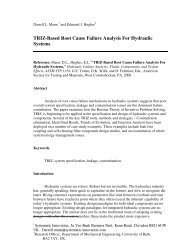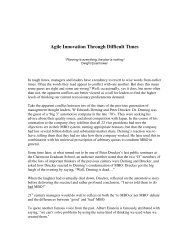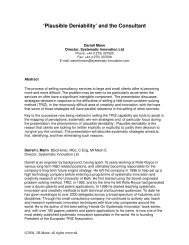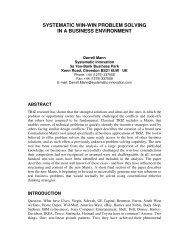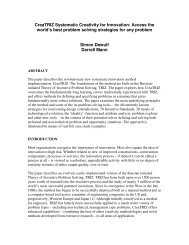Systematic Innovation: An Introduction - Systematic Innovation, TRIZ
Systematic Innovation: An Introduction - Systematic Innovation, TRIZ
Systematic Innovation: An Introduction - Systematic Innovation, TRIZ
You also want an ePaper? Increase the reach of your titles
YUMPU automatically turns print PDFs into web optimized ePapers that Google loves.
<strong>Systematic</strong> <strong>Innovation</strong>: <strong>An</strong> <strong>Introduction</strong><br />
©2006, <strong>Systematic</strong> <strong>Innovation</strong> Ltd<br />
4. That the most powerful solutions also make maximum use of resources. Most<br />
organisations are highly inclined to solve problems by adding things rather than<br />
making the current things work more effectively, or transforming the things viewed<br />
as harmful into something useful.<br />
5. That technology evolution trends follow highly predictable paths.<br />
<strong>TRIZ</strong> was barely visible outside the Soviet Union until the fall of the Iron Curtain. Since<br />
then, the spread of the method has been relatively slow, thanks to a combination of<br />
language and cultural mismatches and the reluctance of organisations using <strong>TRIZ</strong> to<br />
describe their successes (and failures) to others.<br />
This short chapter is intended to give newcomers enough information to determine<br />
whether <strong>TRIZ</strong>/systematic <strong>Innovation</strong> has got something to offer them. <strong>Systematic</strong><br />
<strong>Innovation</strong> works on several levels – Figure 1 – firstly a collection of tools, secondly a<br />
complete process that links different tools together for any given innovation situation,<br />
and thirdly a series of philosophical ideas. In the first section, the chapter focuses on<br />
these ideas and the impact they have on the way problems and opportunities are<br />
defined. The second section then outlines a simplified case study in which one of the<br />
basic tools is used to solve a typical manufacture quality problem. A third, final,<br />
section then outlines strategies for finding out more about and deploying the method.<br />
Excellence<br />
Ideality<br />
Resource<br />
Functionality<br />
Contradiction<br />
Space/Time/Interface<br />
Philosophy<br />
A complete problem<br />
definition/solving process<br />
Method<br />
Inventive Principles<br />
S-Fields<br />
PI Tools<br />
Contradiction Matrix<br />
Function<br />
<strong>An</strong>alysis<br />
Knowledge/<br />
Effects<br />
IFR<br />
Trends<br />
Subversion<br />
<strong>An</strong>alysis<br />
Tool<br />
Trimming<br />
Resources<br />
Separation Principles<br />
Figure 1: Tool, Method & Philosophical Levels of <strong>Systematic</strong> <strong>Innovation</strong><br />
2



